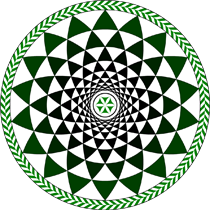The conference is devoted to research on molecular materials, i.e. liquid crystals, glass formers, molecular magnets and nanomagnets, molecular layered systems, polymers as well as biology-oriented and advanced materials for applications. Structure, dynamics, relaxation, magnetism, acoustics and other properties as probed by various experimental techniques and theoretical tools within a broad range of time- and length-scales will be discussed.
We plan 1 opening lecture (50 minutes), 3 keynote lectures (40 minutes), 19 invited talks (30 minutes), 15 oral presentations (20 minutes) - discussion included. A poster session will be also arranged.
The conference will be divided into the following sessions:
1. Soft matter and glass formers.
2. Molecular magnets and nanomagnets.
3. Multifunctional materials.
4. Surfaces and interfaces.
5. Miscellany (biologically oriented systems, new ideas, advanced methods,...).
Confirmed speakers
|
Kamel Boukheddaden |
University Paris Saclay |
Spatiotemporal observation and modelling of temperature scan rate effects on the thermal hysteresis and the dynamics of interface propagation in a spin-crossover single crystal |
|
Lucia Calucci |
ICCOM, Pisa |
Multiscale investigation of MgO-based cements by NMR spectroscopy and relaxometry |
|
Simone Capaccioli |
University of Pisa |
Dielectric spectroscopy in bulk and at nanoscale |
|
Eugenio Coronado |
University of Valencia |
Physics and chemistry in 2D materials: From 2D superconductors and magnets to hybrid molecular/2D heterostructures |
|
Maria da Silva Eusébio |
University of Coimbra |
Accounts of pharmaceutical co-crystals and of plastic crystal mesophases |
|
Marco Evangelisti |
University of Zaragoza |
Probing temperature changes in magnetocaloric molecular matter |
|
Yann Garcia |
Catholic University of Louvain |
Lattice dynamics in selected 1D coordination polymers |
|
Karoliina Honkala |
University of Jyväskylä |
Electrochemical reduction of NO on Pt(100): a combined DFT and KMC study |
|
Mark Johnson |
Institute Laue-Langevin |
Neutrons and atomistic simulations to study multiscale phenomena in molecular systems |
|
Shinya Koshihara |
Tokyo Institute of Technology |
Ultrafast photo-control of ferroelectric order in organic and inorganic strongly correlated matters: role of hidden state |
|
Friedrich Kremer |
University of Leipzig |
The extraordinary mechanical properties of spider silk and its molecular foundation |
|
Núria López |
ICIQ, Spain |
Exploring complexity in oxides |
|
Mark W. Meisel |
University of Florida |
Manipulating magnetic domains at interfaces of coordination-polymer, nanosized heterostructures |
|
Motohiro Nakano |
Osaka University |
Spin-crossover phenomena of a Jahn-Teller active Mn(III) complex [Mn(taa)] |
|
Christian Naether |
Kiel University |
Polymorphism and isomerism in coordination compounds: the nemesis of crystal design |
|
Alžbeta Orendáčová |
Šafárik University |
Interplay of spin and spatial anisotropy in quasi-two-dimensional quantum magnets |
|
Francis Pratt |
ISIS, UK |
Surface dynamics of polymers studied using low energy muons |
|
Victoria Garcia Sakai |
ISIS, UK |
Using neutron techniques to explore the properties of thiophene-based polymers for organic electronics |
|
Marzena Tykarska |
WAT, Poland |
Helical structure of liquid crystals tested by spectroscopy methods |
|
Job Ubbink |
California Polytechnic University |
Multiscale structure in amorphous carbohydrate matrices in relation to phase behavior, molecular packing and interaction with water |
|
Robert Podgajny |
Jagiellonian University |
Functionalization of cyanido-bridged clusters by ligand decoration and metal ion embedment |
|
Jun Yamamoto |
Kyoto University |
Slippery interfaces - dynamics of director and helix rotations |
|
Yasuhisa Yamamura |
University of Tsukuba |
Reentrant phenomenon and odd-even effect in homologous binary system of 4 alkyl-4′-cyanobiphenyl (nCB) |
-
Soft matter and glass formers
-
Molecular magnets and nanomagnets
-
Multifunctional materials
-
Surfaces and interfaces
-
Miscellany (biologically oriented systems, new ideas, advanced methods,...)

